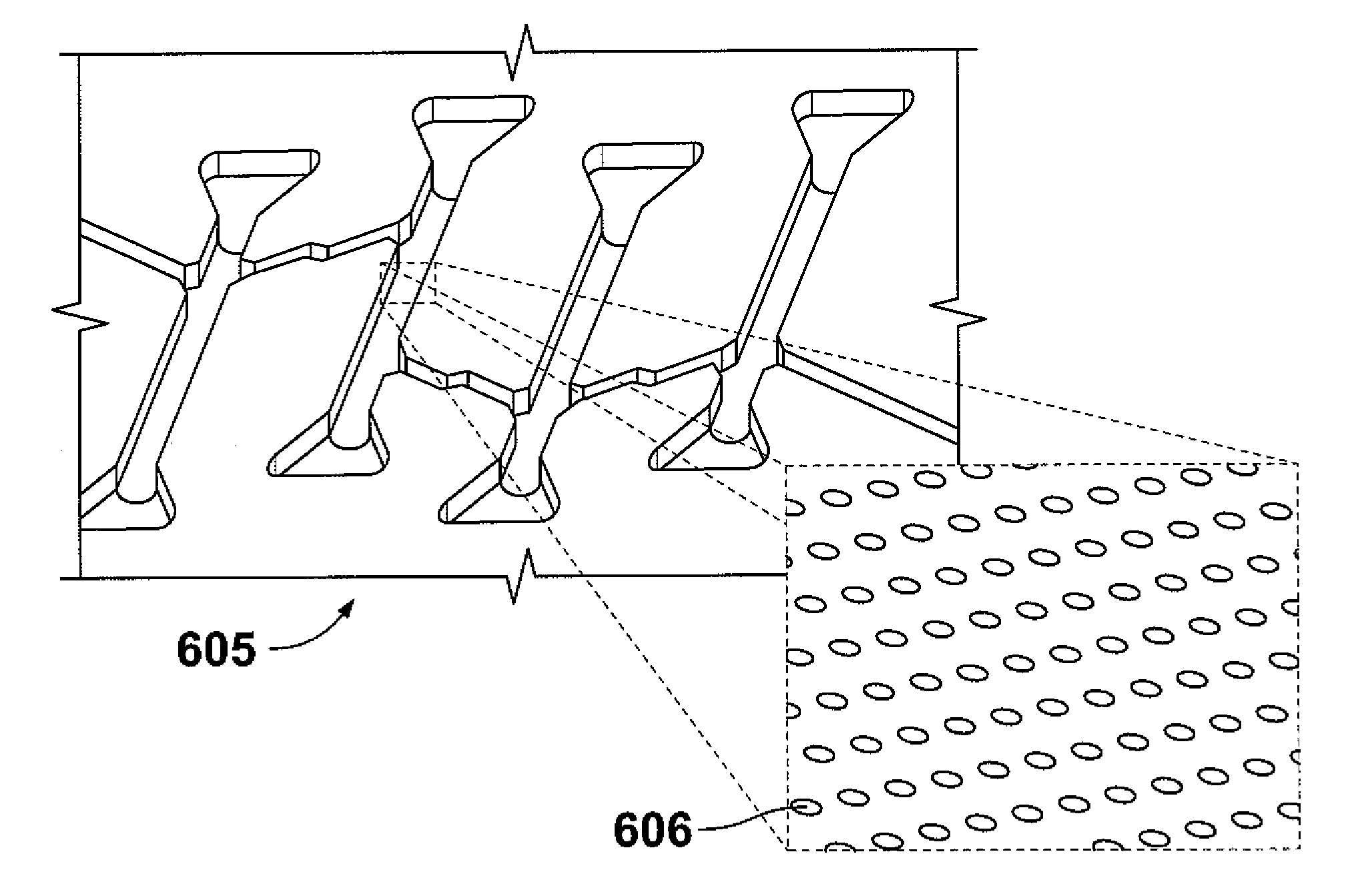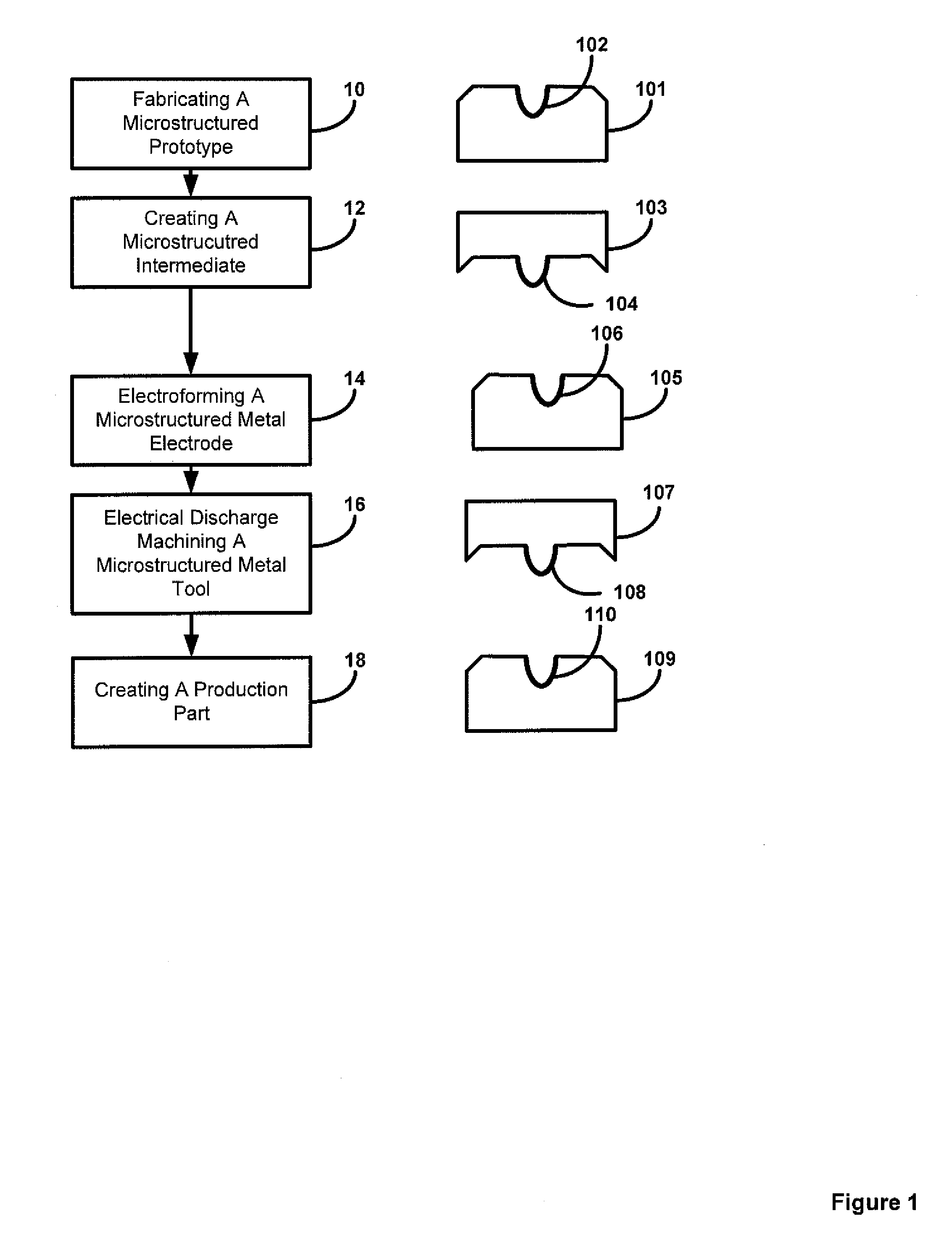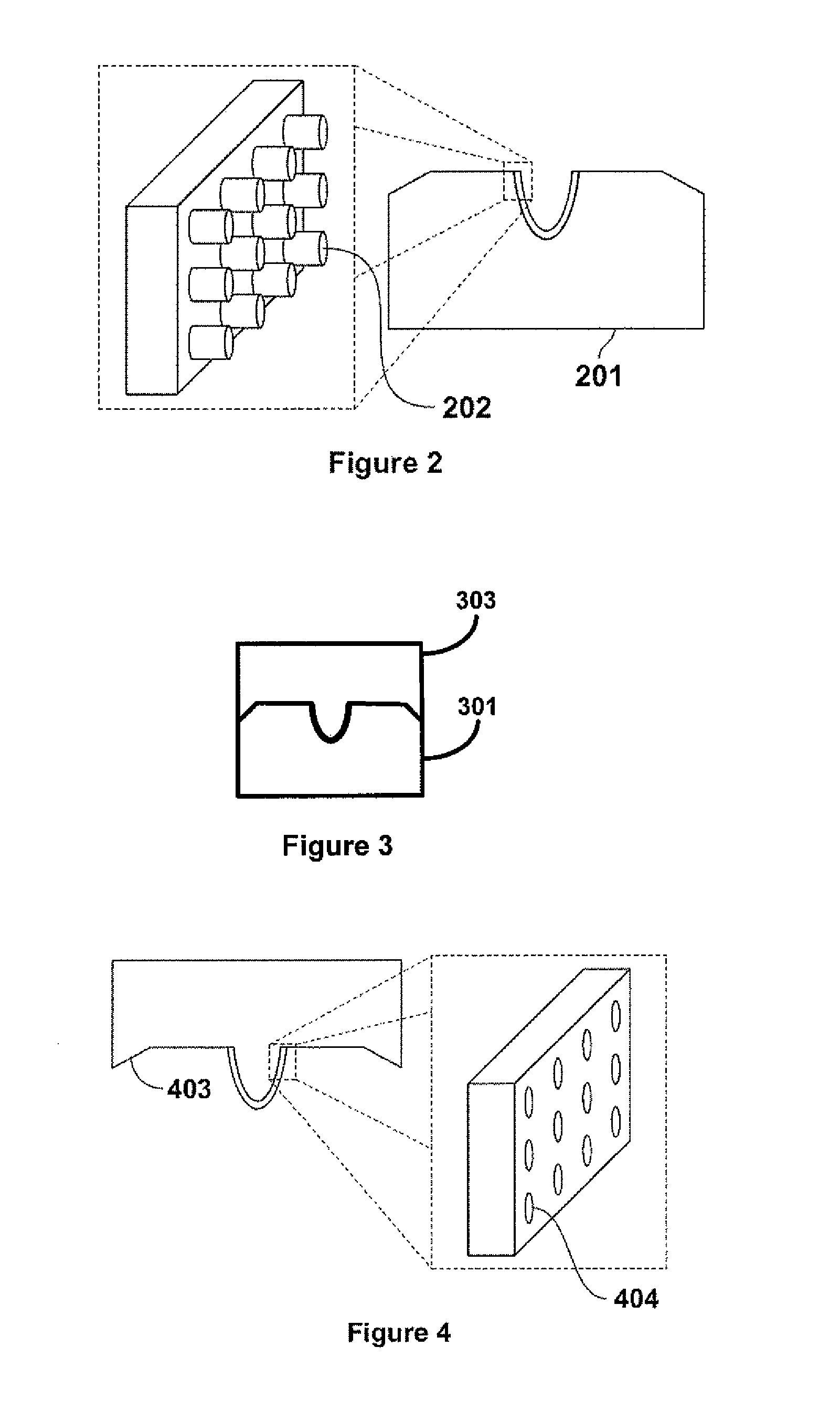Method for making microstructured objects
a technology of microstructured objects and methods, applied in the direction of manufacturing tools, electrical-based machining electrodes, transportation and packaging, etc., can solve the problems of microstructure loss, wear off the surface, and difficulty in coating application
- Summary
- Abstract
- Description
- Claims
- Application Information
AI Technical Summary
Benefits of technology
Problems solved by technology
Method used
Image
Examples
example 1
Microstructure Forming Process Chain and Process Details
[0071]This example describes a method of generating microstructures into the curved surfaces of two different material classes: rubber and metal. In this embodiment, the creation process begins with a prototype that has microstructures incorporated into its curved surface. An intermediate, rubber in one embodiment, is carried by a curved surface of the microstructured prototype, a metal electrode is generated through electroforming on the curved surface of the microstructured prototype. However, the metal electrode could be created using metal injection molding and / or embossing. A metal tool is then generated from the metal electrode. In one embodiment, the metal electrode is used to electrical discharge machine a metal tool resulting in a microstructured curved metal mold surface that can be used for the production part. The microstructures replicate through the steps of the process chain.
[0072]While this example describes the...
example 2
Fabrication Method for Tailored Micrometer-Scale and Nanometer-Scale Structures
[0075]In one embodiment, fabricating Lithographically Defined Arrays of Micro / Nanostructures (LDAMN) can be used. The technique begins with a substrate topped with a photosensitive polymer or resist sensitive to light or particles. By shining light through a stencil mask onto the resist, micrometer-scale or nanometer-scale structures can be formed in the resist. Other kinds of electromagnetic waves, energy beams, or particles can also be used to form these microstructures or nanostructures. The structures can be arrayed into patterns or not, but their key characteristic is that the manufacturing process controls their size, shape, and position with micrometer-scale or nanometer-scale accuracy and precision.
[0076]The resist having tailored microstructures or nanostructures can be used as a mold at this stage. The substrate can also be treated (for example with a chemical etch) to modify the microstructures...
example 3
Reusability of Microstructured Objects and Heterogeneity of Microfeatures
[0079]A microstructured prototype having a preselected pattern of microfeatures can be fabricated in this example. In this embodiment, the preselected pattern included two regions of different microfeature shapes. The first region included micropillars 100 μm tall with 100 μm wide triangular cross-sectional shapes. The second region included micropillars 100 μm tall with 100 μm wide circular cross-sectional shapes.
[0080]An intermediate can be cast to the microstructured prototype to create a first microstructured intermediate object. The microstructured intermediate object thus produced included the two regions of different microfeature shapes formed from the casting of those of the microstructured prototype. The first region formed microholes 100 μm deep with 100 μm wide triangular cross-sectional shapes in the microstructured rubber. The second region formed microholes 100 μm deep with 100 μm wide circular cr...
PUM
| Property | Measurement | Unit |
|---|---|---|
| thickness | aaaaa | aaaaa |
| thickness | aaaaa | aaaaa |
| thickness | aaaaa | aaaaa |
Abstract
Description
Claims
Application Information
 Login to View More
Login to View More - R&D
- Intellectual Property
- Life Sciences
- Materials
- Tech Scout
- Unparalleled Data Quality
- Higher Quality Content
- 60% Fewer Hallucinations
Browse by: Latest US Patents, China's latest patents, Technical Efficacy Thesaurus, Application Domain, Technology Topic, Popular Technical Reports.
© 2025 PatSnap. All rights reserved.Legal|Privacy policy|Modern Slavery Act Transparency Statement|Sitemap|About US| Contact US: help@patsnap.com



